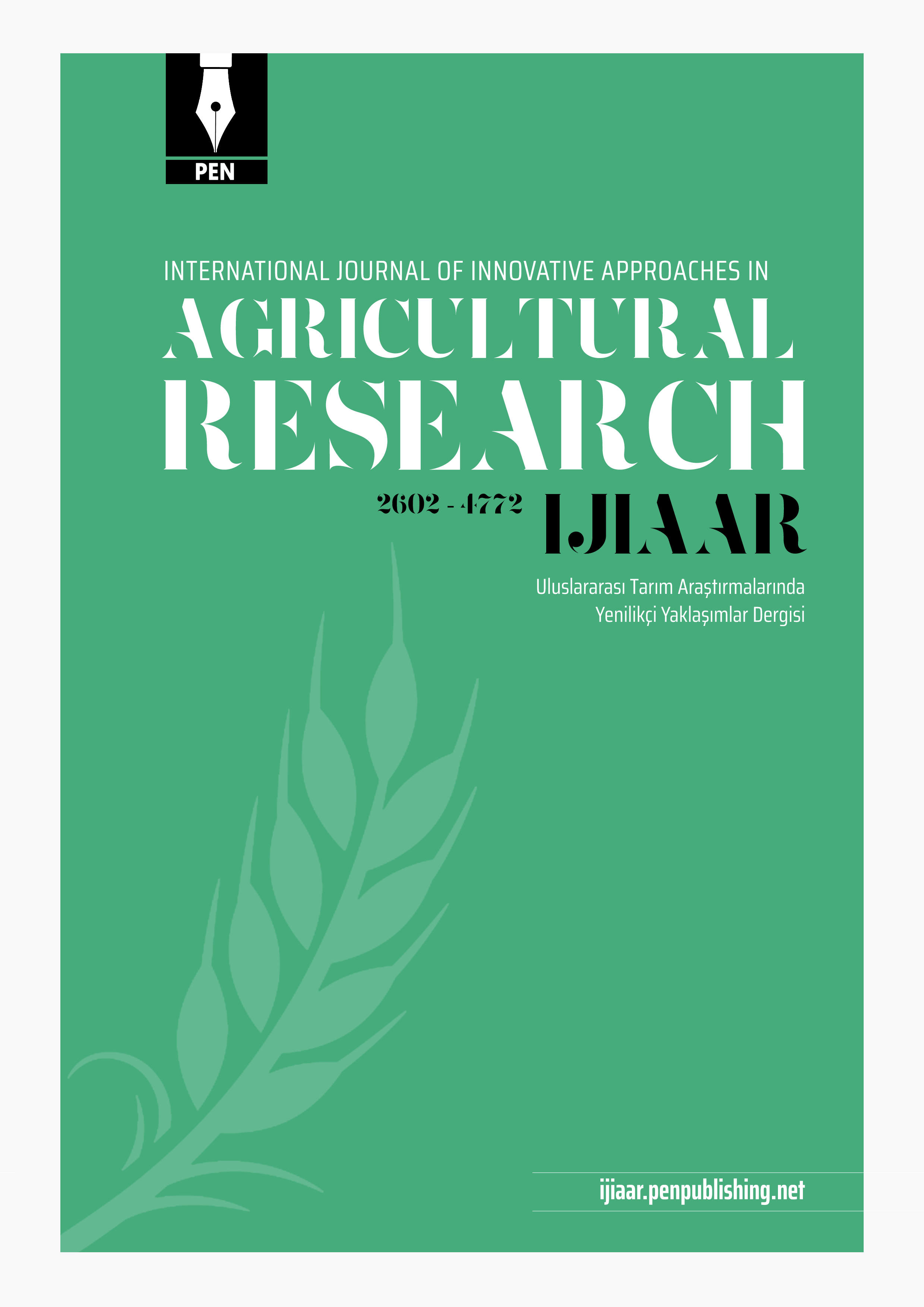
Uluslararası Tarım Araştırmalarında Yenilikçi Yaklaşımlar Dergisi
Yazarlar: Amina Kadırı, Zineb Faiza Boukhatem, Yamina Halfaoui , Zohra Ighilhariz
Konular:-
DOI:10.29329/ijiaar.2019.188.11
Anahtar Kelimeler:Cicer arietinum,Pathosystem,In vitro culture,Chickpea blight
Özet: The objective of this research was to study the interaction between Ascochyta rabiei as a pathogen and its host, established through in vitro tissue culture using as a pathosystem chickpea Cicer arietinum callus inoculated with Ascochyta rabiei spores. A resistant chickpea genotype INRA 199 and a local cultivar “Zouaoui” were used. Murashige and Skoog, (1962) medium supplemented with 0.5 mg/l of Naphthalene Acetic Acid (NAA) and 1 mg/l of Benzyl Amino Purine (BAP) were used for the production of calluses used as a host. The histological study of calli inoculated with Ascocchyta rabiei spore suspension compared to the control showed two different reactions. In INRA199, the pathogen proliferation was slow and limited by the formation of an area where the cells accumulated phenolic compounds whereas in the cultivar Zouaoui the pathogen rapidly colonized the calli intercellular space and the number of formed pycnidia was high.